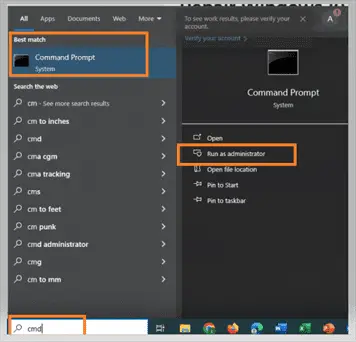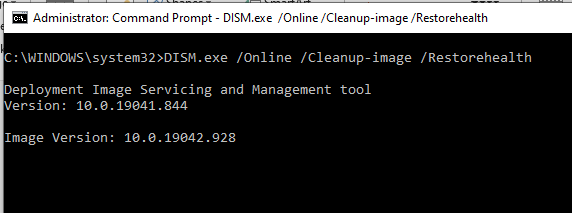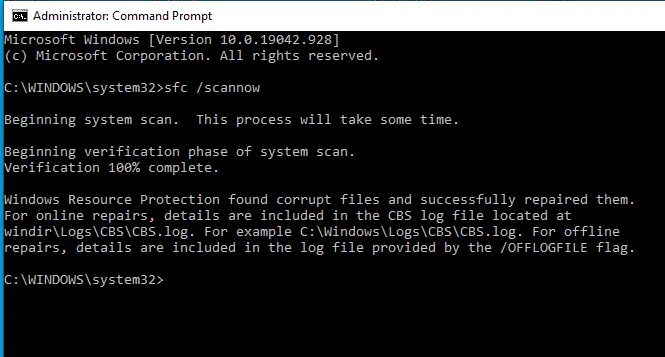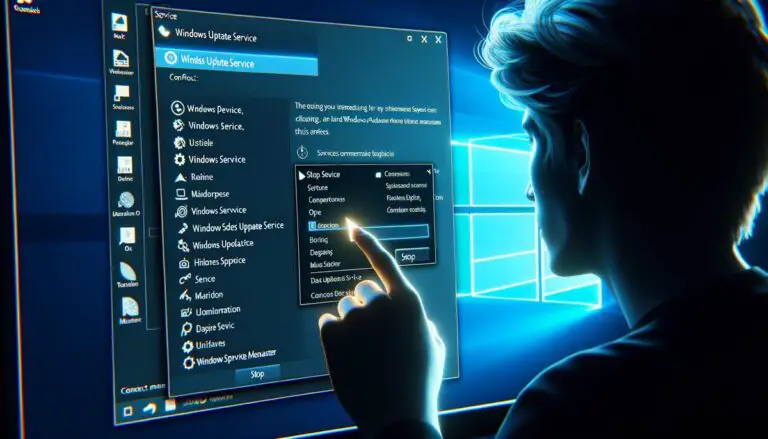Repair Windows 10 Using Command Prompt! (Expert Guide)
Learn how to repair Windows 10 using Command Prompt with this expert guide. Fix system issues with DISM and SFC commands. Follow our step-by-step instructions for effective troubleshooting.
I. Introduction – Repair Windows 10 Using Command Prompt
Windows 10 can sometimes encounter issues that affect its performance and stability. Knowing how to repair these problems using Command Prompt can save you time and frustration.
Whether you’re dealing with corrupted system files, startup problems, or other common issues, the Command Prompt offers powerful tools like DISM and SFC commands to help you restore your system to optimal condition.
II. Preparation
A. System Scan
Before diving into Command Prompt repairs, it’s crucial to ensure your system is free of viruses and malware. Use your antivirus software, such as Windows Defender, to scan your system. Additionally, running an anti-malware program like Malwarebytes, can help ensure that your issues aren’t caused by malicious software.
B. Data Backup
Backing up your important data is essential before performing any system repairs. This precaution helps protect your files in case something goes wrong during the repair process.
III. Accessing Command Prompt

A. Open Command Prompt as Administrator
- Type “cmd” in the search field on the bottom left of the taskbar.
- Select “Run as Administrator.” If prompted, enter the administrator password.
- You should now have the Command Prompt open with administrative privileges.
IV. Using DISM Command
A. Introduction to DISM
The Deployment Image Servicing and Management (DISM) tool is a powerful utility for repairing and preparing Windows images.

B. Running DISM to Repair Windows Images
- Type
DISM.exe /Online /Cleanup-image /Restorehealthand press Enter. - Ensure you have an active internet connection, as DISM will use Windows Update to download necessary files.
- Be patient, as this process can take some time to complete.
V. Using System File Checker (SFC)
A. Introduction to SFC
System File Checker (SFC) is a utility that scans for and repairs corrupted system files.

B. Running SFC to Scan and Repair
- In Command Prompt, type
sfc /scannowand press Enter. - This process will take some time. Keep the Command Prompt window open until it completes.
VI. Using System Restore
A. Introduction to System Restore
System Restore allows you to revert your computer’s state to a previous point in time, which can resolve many issues.
B. Running System Restore
- In Command Prompt, type
rstrui.exeand press Enter. - Follow the on-screen instructions to choose a restore point and begin the restoration process.
VII. Advanced Repairs
A. Checking and Repairing Image Health with DISM
- To scan for corruption, type Dism /Online /Cleanup-Image /ScanHealth and press Enter.
- To check for repairable corruption, type Dism /Online /Cleanup-Image /CheckHealth and press Enter.
- If the image is repairable, use DISM.exe /Online /Cleanup-image /Restorehealth to fix the issues.
B. Resetting Windows 10
If all else fails, you can reset Windows 10 to its factory settings:
- In Command Prompt, type
systemresetand press Enter. - Choose from the following options:
- Keep My Files (removes apps and settings but keeps personal files)
- Remove Everything (removes all personal files, apps, and settings)
- Cancel (abandon system reset)
- Follow the prompts to complete the reset process.
VIII. Troubleshooting and Additional Tips
A. Persistent Issues
If issues persist after using the Command Prompt, consider these additional steps:
- Check for hardware issues that might be causing problems.
- Ensure all drivers are up to date.
B. Using Boot Disks and Safe Mode
For more severe issues, boot your computer using a Windows installation disk or a recovery drive. You can also enter Safe Mode to troubleshoot and fix problems.
C. Recovery Environments
Use the Windows Recovery Environment (WinRE) for advanced troubleshooting. Access it by restarting your computer and pressing the appropriate key (usually F8 or Shift+F8) during startup.
IX. Conclusion
Repairing Windows 10 using Command Prompt can resolve many common issues and keep your system running smoothly. By following the steps outlined in this guide, you can effectively use tools like DISM and SFC to fix corrupted files and restore your system’s health. If you have any questions or need further assistance, feel free to leave a comment below.
Related articles:
- How to Clear Cache in Windows 10 PC in 11 Ways
- DISM Command Windows 10
- Mastering Command Prompt Commands
Further Reading:






